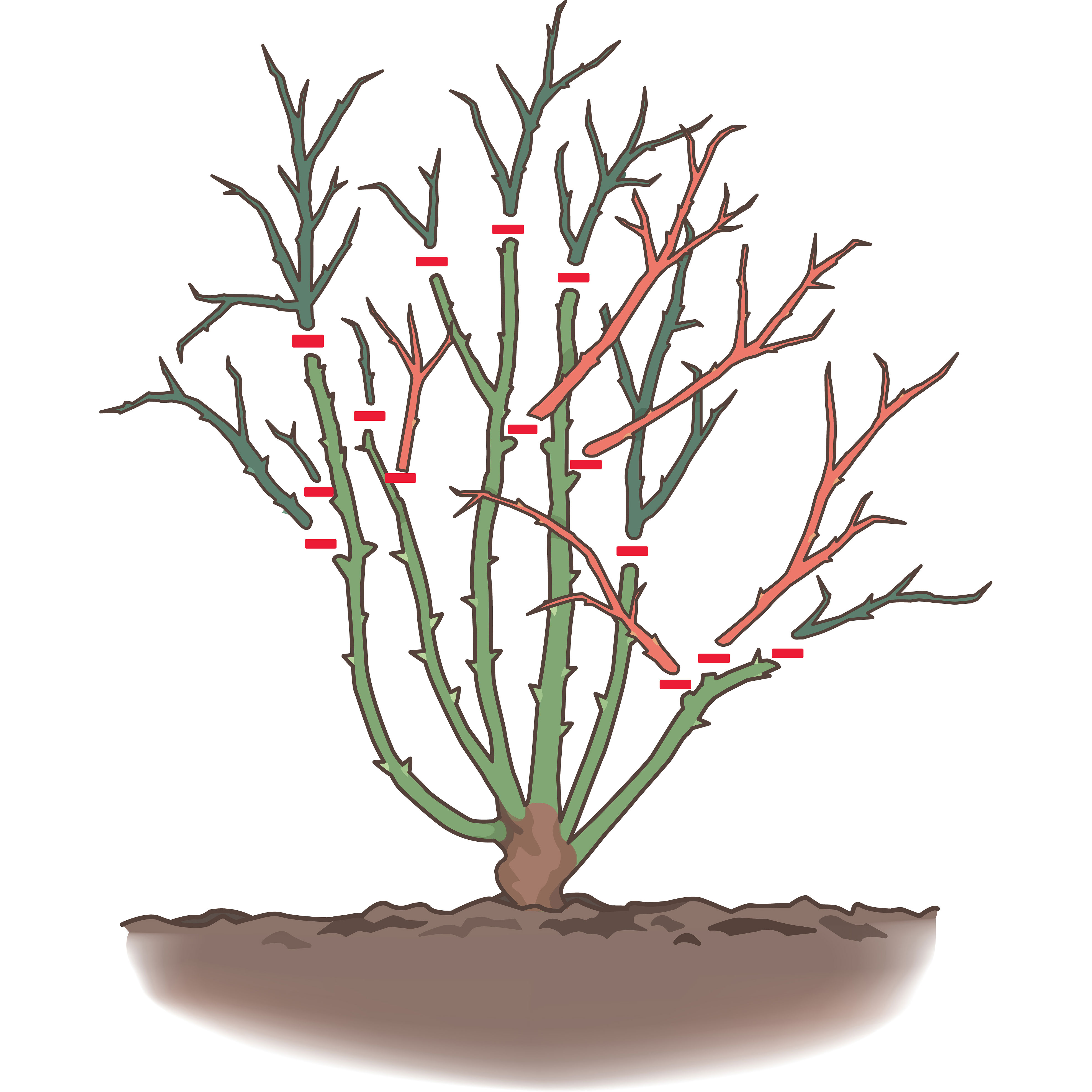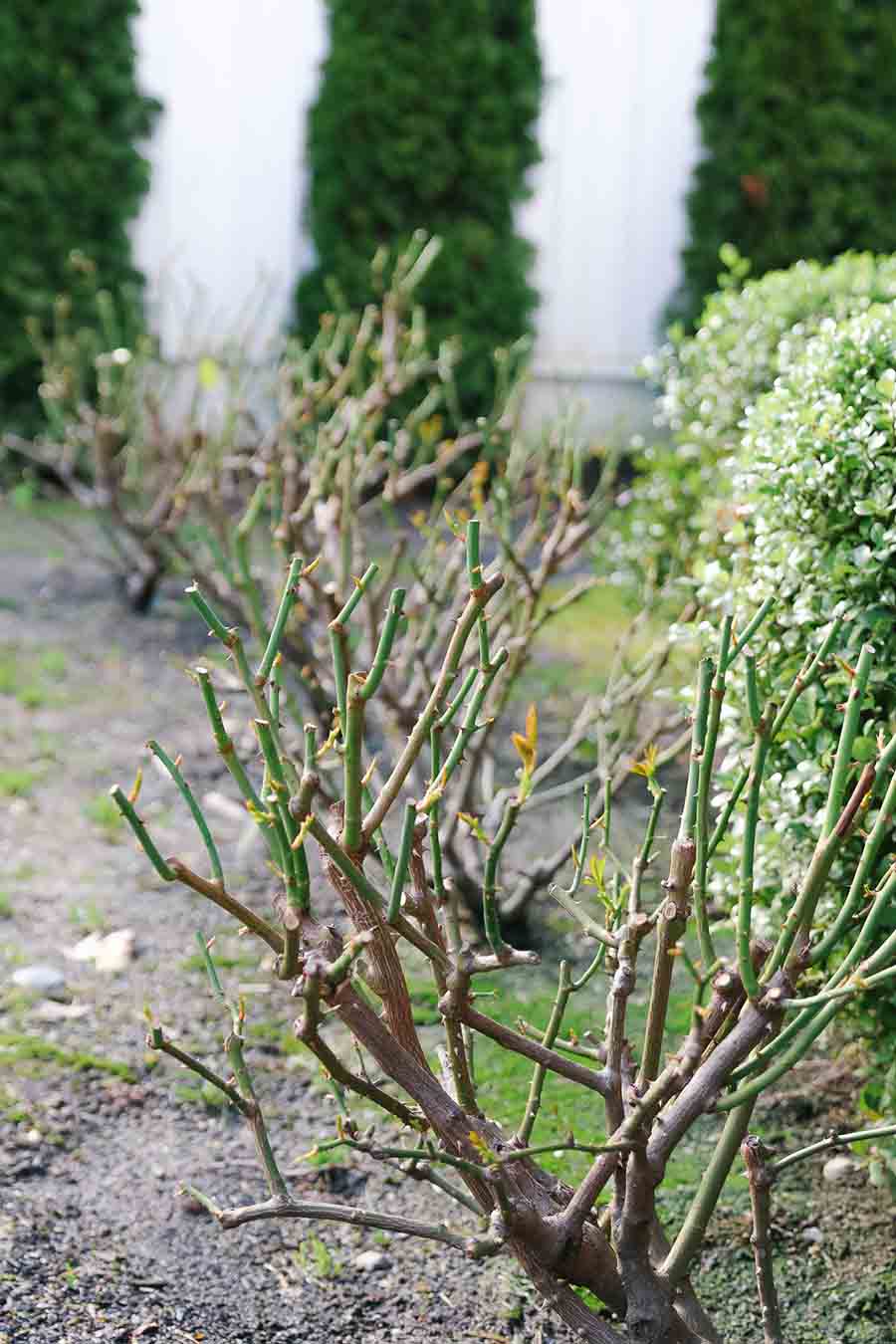Why Winter Pruning is Crucial for Rose Bushes
As the winter season approaches, rose bushes require special care to ensure they remain healthy and thrive come springtime. One of the most critical steps in preparing your rose garden for the cold season is pruning. Trimming rose bushes for winter is essential for promoting healthy growth, preventing disease, and protecting the plant from harsh weather conditions.
Pruning rose bushes before winter helps to remove dead, diseased, or damaged branches, which can harbor pests and diseases that can spread to other parts of the plant. By removing these branches, you can prevent the spread of disease and encourage healthy growth. Additionally, pruning helps to promote air circulation within the plant, which can help to prevent fungal diseases that thrive in moist environments.
Winter pruning also helps to protect the plant from harsh weather conditions. By cutting back canes and removing weak growth, you can help to prevent damage from wind, snow, and ice. This is especially important for rose bushes that are exposed to harsh winter conditions, such as those planted in areas with high winds or extreme cold.
Furthermore, pruning rose bushes for winter can help to promote new growth come springtime. By removing old, woody growth, you can encourage the plant to produce new canes and blooms. This can lead to a more vigorous and healthy plant, with more blooms and a fuller appearance.
In summary, trimming rose bushes for winter is a crucial step in preparing your rose garden for the cold season. By pruning your rose bushes, you can promote healthy growth, prevent disease, and protect the plant from harsh weather conditions. This simple step can help to ensure your rose bushes remain healthy and thrive come springtime.
How to Prune Your Rose Bushes for Winter
Pruning rose bushes for winter is a straightforward process that requires the right tools and a bit of knowledge. To get started, gather the following tools: a pair of sharp, clean pruning shears, a lopper for thicker branches, and a garden glove to protect your hands from thorns.
Begin by inspecting your rose bush for dead, diseased, or damaged branches. Look for signs of disease such as black spots, powdery mildew, or rust. Remove any branches that are affected, cutting them off at the base to prevent the spread of disease.
Next, identify any weak or spindly growth. Cut back these branches to about 12-18 inches from the ground, making a clean cut just above a bud eye. This will help to promote new growth and encourage the plant to produce more blooms.
For hybrid tea and floribunda roses, cut back the canes to about 24-36 inches from the ground. This will help to control the size of the plant and promote new growth. For shrub roses, prune the plant to maintain its shape and size, removing any dead or damaged branches.
When cutting back canes, make a clean cut at a 45-degree angle, just above a bud eye. This will help to promote new growth and prevent water from collecting on the cut end. Remove any weak or spindly growth, and cut back any branches that are rubbing against each other.
Finally, remove any leaves or debris from the plant, and dispose of them to prevent the spread of disease. This will help to keep your rose bush healthy and promote new growth come springtime.
By following these steps, you can prune your rose bushes for winter and help to promote healthy growth, prevent disease, and protect the plant from harsh weather conditions. Remember to prune your rose bushes at the right time, and use the right tools to get the job done.
Understanding the Different Types of Rose Bushes and Their Pruning Needs
Rose bushes come in a variety of types, each with its own unique pruning needs and requirements. Understanding the specific needs of your rose bushes is crucial for trimming rose bushes for winter and promoting healthy growth.
Hybrid tea roses, for example, are known for their large, repeat-flowering blooms. These roses require regular pruning to maintain their shape and promote new growth. When pruning hybrid tea roses, cut back the canes to about 24-36 inches from the ground, and remove any dead or damaged branches.
Floribunda roses, on the other hand, are known for their clusters of blooms and require less pruning than hybrid tea roses. When pruning floribunda roses, cut back the canes to about 12-18 inches from the ground, and remove any dead or damaged branches.
Shrub roses, such as Knock Out and Drift roses, are low-maintenance and require minimal pruning. When pruning shrub roses, simply remove any dead or damaged branches, and shape the plant to maintain its desired form.
Climbing roses, such as English roses and ramblers, require regular pruning to maintain their shape and promote new growth. When pruning climbing roses, cut back the canes to about 6-12 inches from the ground, and remove any dead or damaged branches.
It’s also important to note that some rose bushes, such as antique and old garden roses, require special pruning techniques. These roses often have a more delicate structure and require gentle pruning to avoid damaging the plant.
By understanding the specific pruning needs of your rose bushes, you can ensure that they receive the care they need to thrive. Trimming rose bushes for winter is an essential step in promoting healthy growth and preventing disease, and by following the specific pruning needs of your rose bushes, you can help to ensure a bountiful bloom come springtime.
The Best Time to Prune Your Rose Bushes for Winter
The optimal time to prune rose bushes for winter depends on several factors, including climate, weather, and the plant’s dormant period. In general, it’s best to prune rose bushes in late fall or early winter, after the plant has gone dormant.
In regions with mild winters, pruning can be done in late November or early December. In areas with harsher winters, it’s best to prune in late January or early February, when the plant is fully dormant.
It’s also important to consider the specific weather conditions in your area. Avoid pruning during periods of extreme cold or wet weather, as this can cause damage to the plant. Instead, prune during a period of calm, dry weather, when the plant is less stressed.
Another factor to consider is the plant’s dormant period. Rose bushes typically go dormant in the fall, and remain dormant until the spring. Pruning during this period can help to promote healthy growth and prevent disease.
When pruning rose bushes for winter, it’s also important to consider the specific pruning needs of your plant. Different types of rose bushes have different pruning requirements, so be sure to research the specific needs of your plant before pruning.
By pruning your rose bushes at the right time, you can help to promote healthy growth, prevent disease, and protect the plant from harsh weather conditions. Trimming rose bushes for winter is an essential step in maintaining a healthy and thriving rose garden.
In addition to pruning, there are other steps you can take to prepare your rose garden for winter. Mulching, covering, and using anti-desiccant sprays can all help to protect your rose bushes from harsh winter conditions. By taking these steps, you can help to ensure a bountiful bloom come springtime.
Common Mistakes to Avoid When Pruning Rose Bushes for Winter
When pruning rose bushes for winter, it’s essential to avoid common mistakes that can damage the plant or reduce its chances of thriving in the spring. Here are some common mistakes to avoid:
Over-pruning is one of the most common mistakes made when pruning rose bushes for winter. Over-pruning can stress the plant and make it more susceptible to disease and pests. To avoid over-pruning, prune only what is necessary to maintain the plant’s shape and promote healthy growth.
Under-pruning is another common mistake made when pruning rose bushes for winter. Under-pruning can lead to weak and leggy growth, which can make the plant more prone to disease and pests. To avoid under-pruning, make sure to prune enough to maintain the plant’s shape and promote healthy growth.
Pruning at the wrong time is also a common mistake made when pruning rose bushes for winter. Pruning too early or too late can disrupt the plant’s natural growth cycle and make it more susceptible to disease and pests. To avoid pruning at the wrong time, prune your rose bushes in late fall or early winter, when the plant is dormant.
Not using the right tools is another common mistake made when pruning rose bushes for winter. Using dull or dirty pruning tools can spread disease and damage the plant. To avoid this, use sharp, clean pruning tools and disinfect them between cuts.
Not making clean cuts is also a common mistake made when pruning rose bushes for winter. Making clean cuts is essential to promote healthy growth and prevent disease. To make clean cuts, use sharp pruning tools and cut at a 45-degree angle, just above a bud eye.
By avoiding these common mistakes, you can ensure that your rose bushes are properly pruned for winter and will thrive in the spring. Trimming rose bushes for winter is an essential step in maintaining a healthy and thriving rose garden.
Additional Tips for Protecting Your Rose Bushes from Harsh Winter Conditions
In addition to pruning, there are several other steps you can take to protect your rose bushes from harsh winter conditions. Mulching, covering, and using anti-desiccant sprays can all help to protect your rose bushes from cold temperatures, wind, and dry air.
Mulching is a simple and effective way to protect your rose bushes from harsh winter conditions. Apply a layer of mulch, such as straw or bark chips, around the base of the plant. This will help to insulate the soil, retain moisture, and regulate soil temperature.
Covering your rose bushes can also provide protection from harsh winter conditions. Use a breathable cloth or tarp to cover the plant, and secure it with stakes or weights. This will help to protect the plant from wind, snow, and ice.
Anti-desiccant sprays can also help to protect your rose bushes from harsh winter conditions. These sprays create a barrier on the surface of the leaves and stems, preventing moisture loss and protecting the plant from wind and cold temperatures.
Other tips for protecting your rose bushes from harsh winter conditions include:
Watering: Water your rose bushes well before the ground freezes to ensure that the soil is moist and can withstand the cold temperatures.
Fertilizing: Avoid fertilizing your rose bushes in the fall, as this can promote new growth that may be damaged by cold temperatures.
Monitoring: Monitor your rose bushes regularly for signs of damage or disease, and take action promptly if you notice any problems.
By following these tips, you can help to protect your rose bushes from harsh winter conditions and ensure that they remain healthy and thriving. Trimming rose bushes for winter is just one part of a comprehensive winter care plan that can help to promote healthy growth and prevent damage.
How to Care for Your Pruned Rose Bushes During the Winter Months
After pruning your rose bushes for winter, it’s essential to provide them with the right care to ensure they remain healthy and thrive during the cold season. Here are some tips on how to care for your pruned rose bushes during the winter months:
Watering: Water your pruned rose bushes sparingly during the winter months. The soil should be kept moist but not waterlogged, as this can lead to root rot and other problems.
Fertilizing: Avoid fertilizing your pruned rose bushes during the winter months, as this can promote new growth that may be damaged by cold temperatures. Instead, wait until the spring when the plant is actively growing.
Monitoring: Monitor your pruned rose bushes regularly for signs of pests and diseases, such as aphids, whiteflies, and black spot. Take action promptly if you notice any problems, using organic or chemical controls as needed.
Mulching: Mulch around the base of your pruned rose bushes to retain moisture, suppress weeds, and regulate soil temperature. Use a layer of 2-3 inches of organic mulch, such as straw or bark chips.
Protecting from extreme weather: Protect your pruned rose bushes from extreme weather conditions, such as wind, snow, and ice. Use a breathable cloth or tarp to cover the plant, and secure it with stakes or weights.
By following these tips, you can help to ensure your pruned rose bushes remain healthy and thrive during the winter months. Trimming rose bushes for winter is an essential step in maintaining a healthy and thriving rose garden, and with the right care, your plants will be ready to bloom beautifully in the spring.
What to Expect from Your Rose Bushes After Winter Pruning
After pruning your rose bushes for winter, you can expect several benefits that will enhance the overall appearance and health of your plants. Here are some of the benefits you can expect:
Increased Blooms: Pruning your rose bushes for winter can help to promote healthy growth and increase the number of blooms in the spring. By removing dead or diseased branches, you can encourage the plant to produce more flowers and enjoy a more vibrant display of color.
Improved Plant Health: Pruning your rose bushes for winter can also help to improve the overall health of the plant. By removing dead or diseased branches, you can prevent the spread of disease and encourage healthy growth.
Enhanced Overall Appearance: Pruning your rose bushes for winter can also help to enhance the overall appearance of your plants. By removing dead or diseased branches, you can create a more balanced and symmetrical shape, and enjoy a more attractive display of foliage and flowers.
Reduced Maintenance: Pruning your rose bushes for winter can also help to reduce maintenance in the spring. By removing dead or diseased branches, you can reduce the amount of pruning and training needed in the spring, and enjoy a more low-maintenance garden.
By pruning your rose bushes for winter, you can enjoy a healthier, more vibrant, and more attractive garden in the spring. Trimming rose bushes for winter is an essential step in maintaining a healthy and thriving rose garden, and with the right care, your plants will be ready to bloom beautifully in the spring.








